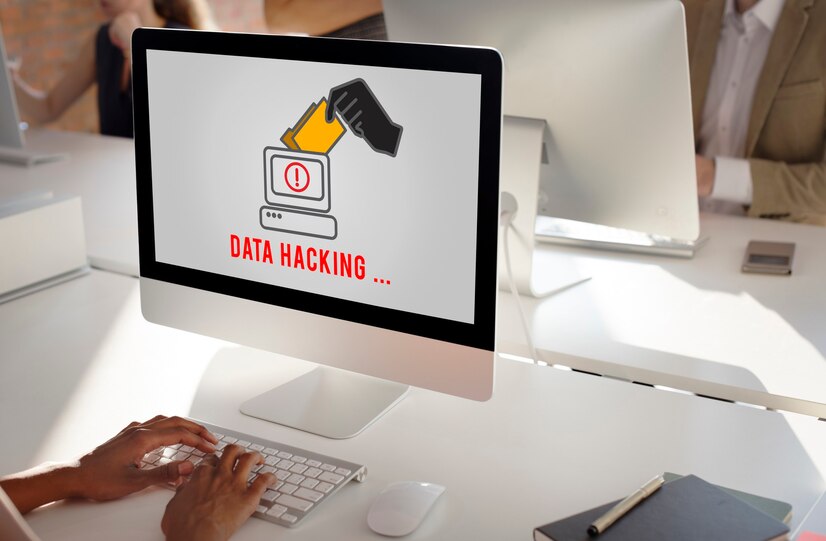
Have you ever heard of the term “ransomware”? If not, buckle up because we’re diving deep into this digital menace that’s been wreaking havoc across the virtual landscape. Ransomware attacks are no joke, and understanding the risks they pose is crucial in safeguarding yourself against them. So, grab a cup of your favorite beverage, settle in, and let’s unravel the mysteries of ransomware together.
What Exactly Is Ransomware?
Alright, picture this: you’re innocently browsing the web, minding your own business, when suddenly, your screen locks up, and a menacing message appears. It informs you that all your files have been encrypted and are being held hostage. The only way to regain access? Fork over a hefty sum of cash, usually in the form of cryptocurrency, to the cybercriminals responsible. That, my friend, is ransomware in action.
The Anatomy Of A Ransomware Attack

Now that we know what ransomware is, let’s dissect how these attacks typically unfold:
- Infection – Ransomware, like this underground ransomware, often sneaks its way onto your device through cleverly crafted phishing emails, malicious links, or compromised websites. Once you unknowingly download or click on the infected file, it’s game over.
- Encryption – After infiltrating your system, the ransomware gets to work encrypting your files, rendering them inaccessible without the decryption key held by the attackers.
- Ransom Demand – With your files effectively held hostage, the cybercriminals behind the attack demand payment, usually within a tight deadline. Failure to comply often results in the permanent loss of your data.
The High Stakes Of Ransomware Attacks
So, why should you care about ransomware? Well, aside from the obvious headache of losing access to your valuable files, the ramifications can be far-reaching:
- Financial Loss – Paying the ransom doesn’t guarantee that you’ll get your files back. Plus, even if you do, you’re essentially funding criminal activities. It’s a lose-lose situation.
- Reputation Damage – For businesses, falling victim to a ransomware attack can tarnish their reputation and erode customer trust. After all, who wants to do business with an organization that can’t keep their data safe?
- Legal Consequences – Depending on the nature of the data compromised, there could be legal repercussions for failing to protect sensitive information. Compliance regulations such as GDPR impose hefty fines for data breaches, adding insult to injury.
How To Guard Against Ransomware Attacks

Now that we’ve painted a bleak picture of the ransomware landscape, let’s shift gears and talk about proactive measures you can take to fortify your defenses:
- Keep Your Software Updated – Cybercriminals often exploit vulnerabilities in outdated software to launch their attacks. By staying on top of software updates, you can patch up those security holes before they’re exploited.
- Invest in Antivirus Software – A robust antivirus program can act as a barrier against ransomware and other malicious threats. Make sure to choose one with real-time scanning capabilities for maximum protection.
- Practice Safe Browsing Habits – Exercise caution when clicking on links or downloading attachments, especially from unfamiliar sources. When in doubt, it’s better to err on the side of caution and avoid potential threats altogether.
- Backup Your Data Regularly – Perhaps the most crucial step in mitigating the impact of a ransomware attack is regularly backing up your data to an external source. That way, even if your files are encrypted, you’ll have a clean copy to fall back on.
- Educate Yourself and Your Team – Knowledge is power when it comes to cybersecurity. Take the time to educate yourself and your employees about the latest ransomware threats and how to spot potential red flags.
Responding To A Ransomware Attack
Despite our best efforts to prevent ransomware attacks, sometimes the unthinkable happens, and we find ourselves staring down the barrel of a digital hostage situation. In such dire circumstances, it’s essential to keep a cool head and follow these steps:
- Isolate Infected Devices – Immediately disconnect any infected devices from your network to prevent the ransomware from spreading further.
- Assess the Damage – Take stock of which files have been encrypted and assess the impact of the attack on your operations.
- Contact Law Enforcement – Notify the appropriate authorities, such as local law enforcement or cybersecurity agencies, to report the incident and seek assistance.
- Do Not Pay the Ransom – While it may be tempting to pay the ransom to regain access to your files quickly, doing so only emboldens cybercriminals and fuels future attacks. Instead, focus on restoring your systems and data through other means.
- Restore from Backup – If you’ve been diligent about backing up your data, now’s the time to put those backups to good use. Restore your files from a clean backup to get your operations back up and running as soon as possible.
- Implement Security Measures – Once the immediate crisis has been averted, take proactive steps to bolster your cybersecurity defenses and prevent future attacks.
Final Thoughts
Phew! We’ve covered a lot of ground in our exploration of ransomware attacks, but hopefully, you’re now equipped with the knowledge and tools to better protect yourself against this digital menace. Remember, staying vigilant and proactive is key in the ever-evolving landscape of cybersecurity. So, keep those defenses up and stay safe out there in the wild, wild web!
Read Also:






